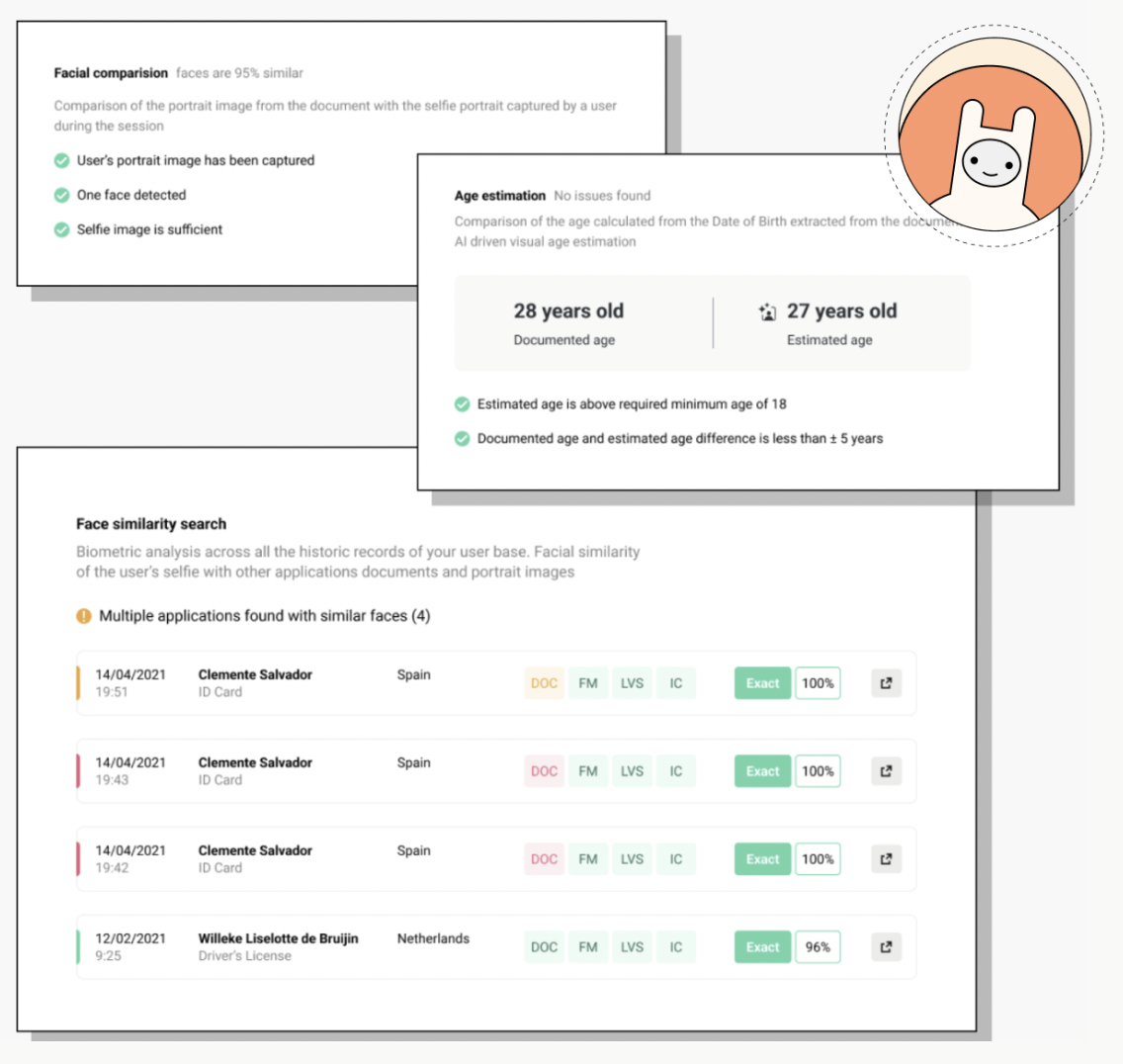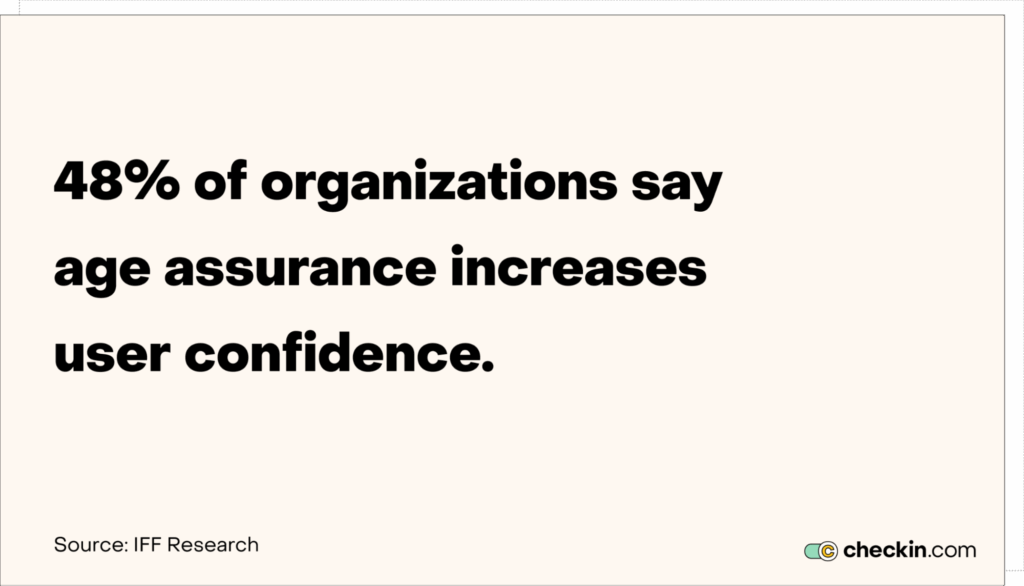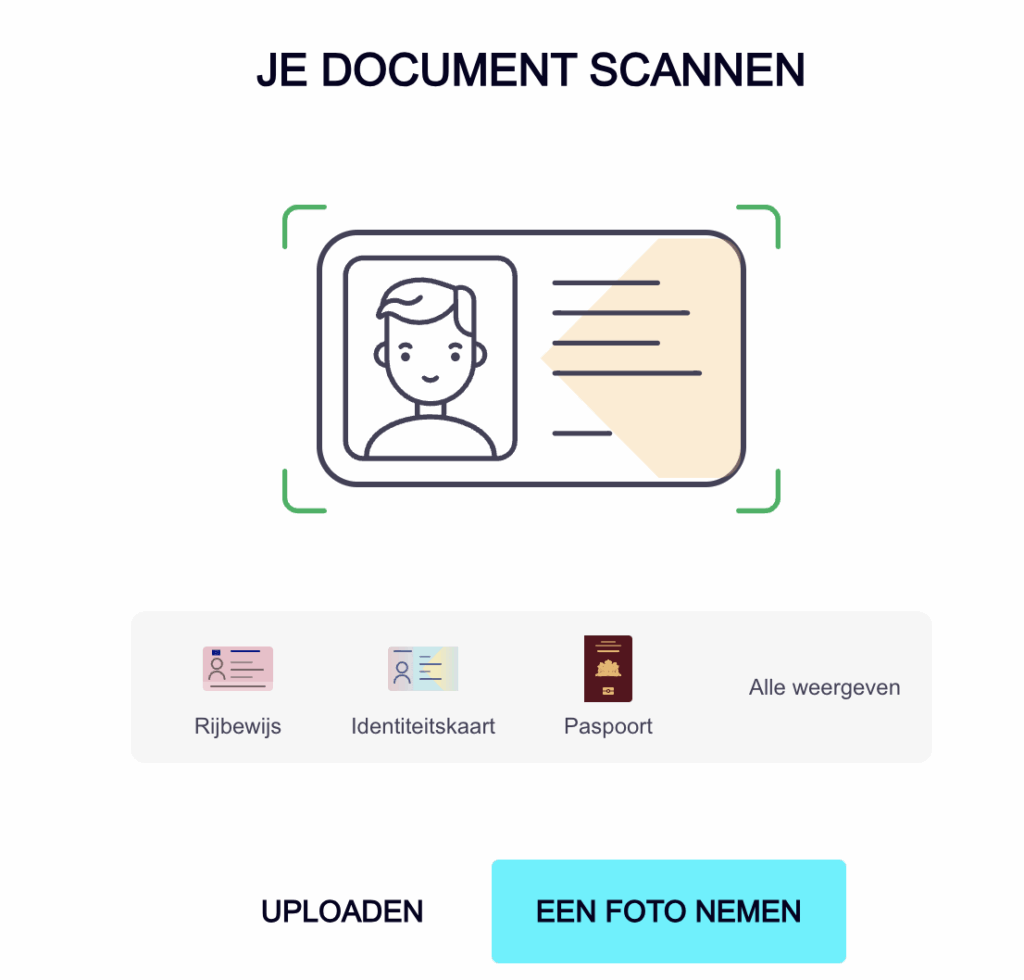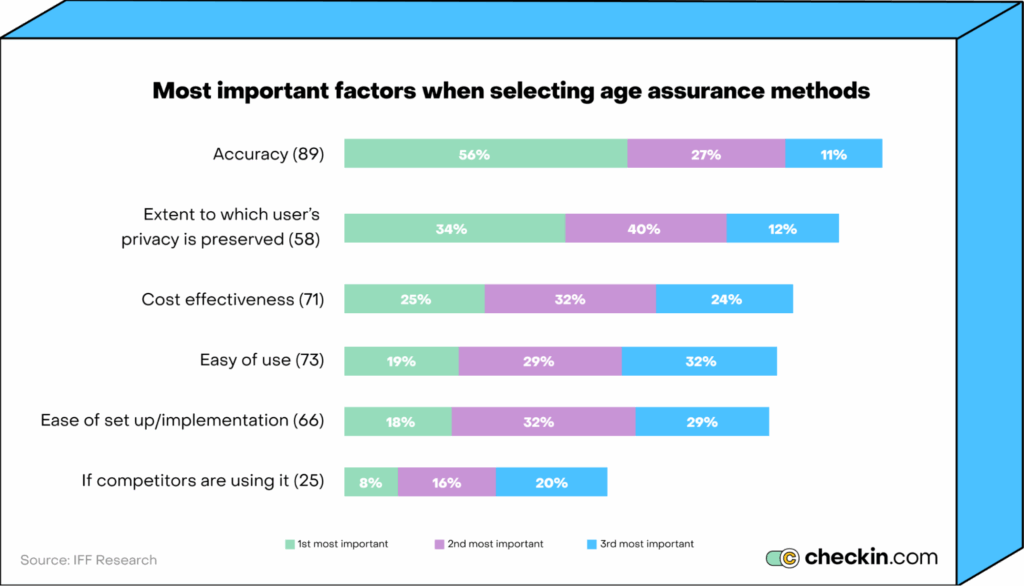
Age assurance has become a critical challenge for industries like ecommerce, social media, and gambling.
It’s not just that age-restriction regulations are getting stricter. It’s also about showing your users that you’re committed to their safety — especially in regards to minors.
The problem is that traditional self-reporting methods are easy to cheat. This allows under-age users to access inappropriate content, services, and goods.
Enter age assurance technology.
It offers a smarter solution using AI and biometric data. It can determine a user’s age in seconds with a higher degree of accuracy than manual checks.
This improves security and removes friction.
In this guide, we’ll break down what age assurance technology is and how it works. We’ll explore the benefits and show you key use cases to see those benefits in action.
Age assurance regulations and the changing regulatory landscape
Governments around the world are enforcing stricter age verification laws to protect minors.
Currently, self-declaration is the most popular method of age verification, but it’s highly ineffective. It’s easy for minors to bypass these systems by simply claiming to be older than they are. What’s more, the rise of deepfake and manipulated ID documents means that rudimentary ID checks also fail to prevent minors from accessing age-restricted content and services.
By implementing tighter regulations, governments are demanding that businesses do more to verify user ages.
Here are some of the key regulations coming into force worldwide.
Social and digital media platforms
Both the UK and Australia recently brought in laws that block underage users from accessing social media platforms.
The UK Online Safety Act (2024) requires that social media companies and interactive gaming services block under-13s from using their services. These platforms must implement age verification technologies to ensure underage users can’t gain access.
Companies that fail to comply face fines of up to $23 million or 10% of their global revenue.
Australia’s Online Safety Amendment demands equally as strict age verification for minors but bans anyone under the age of 16 from using social media. Platforms must enforce mandatory age verification or face heavy fines and service bans.
Following in their footsteps, the USA has proposed the Protecting Kids on Social Media Act, which requires parental consent for minors to open social media accounts. Platforms must implement stronger age verification systems beyond self-declaration. Platforms that fail to do this will face legal penalties.
At the state level, states like Louisiana already have social media laws. Users under 16 must have express parental consent, and social media sites must make reasonable efforts to verify age.
Age-restricted content and ecommerce
The USA’s Kids Online Safety Act demands that online sites protect minors from harmful content. Sites must use age-appropriate content filters and strong verification processes. If sites fail to comply, they risk lawsuits and fines.
The EU has a similar law, known as the EU Digital Services Act. It requires that adult content, gambling, and social media sites have strong age verification mechanisms. This act also bans companies from advertising to minors based on personal data. Any company not compliant with this law faces fines of up to 6% of their global revenue.
Alcohol and tobacco
In the USA, alcohol sales and tobacco sales are restricted to anyone under the age of 21. Online vendors must inspect government-issued ID to ensure buyers are over the legal age.
This is true in most other countries, although the age limit is different. In the UK, for example, vendors must make sure buyers are over 18. In Canada, alcohol buyers must be over 18 or 19 depending on the province, and tobacco buyers must be over 18.
Adult content
Under the UK’s Online Safety Act, children under 13 are banned from entering adult sites. Sites with adult content must implement robust age verification technologies to ensure underage users can’t access this content.
In the US, state-wide regulations are starting to come into play. States like Utah, Texas, and Mississippi require adult content sites to take reasonable measures to restrict minors. Purchasers of adult content must be over 18, and distributors must implement effective age verification methods or face fines of up to $10,000 and legal penalties.
Age assurance technology: Explained
The internet is full of age-restricted content, and young people are trying to access it. In fact, 73% of organizations say they’ve had users under 18 try to access their services.
The problem is that a lot of age-restricted services, like adult content, can be seen as a form of online harm for underage users. It’s more important than ever that digital service providers protect underage users by offering an age-appropriate experience for everyone.
This is where age assurance technology steps in.
What is age assurance?
Age assurance is an umbrella term for the mechanisms and technologies that estimate and verify the age of users.
It aims to make sure that users meet the age verification requirements for certain online content, services, or activities.
Aside from legal compliance, age assurance protects minors from the potential harm of accessing inappropriate or sexual content.
It also ensures safe access to age-restricted goods or activities like gambling or alcohol.

Age assurance is often used during customer onboarding. But it can also be used at other stages of the online journey.
Age assurance mechanisms might come into play when a user tries to access a specific site, app, or service. Also, when they’re accessing specific features or content on a service.
It can also be triggered by certain actions, like attempts to bypass the system.
For example, if you input an age under 18 and try to go back and change it, you’ll likely come face-to-face with age assurance.
Users might also have to verify their age in response to a flag or report.
Types of age assurance methods
There are several methods for age assurance with different accuracy levels. The appropriateness of each technique comes down to the compliance needs of the organization and the regulations in the markets they serve.
For content or activities restricted by law, there needs to be firmer, more precise techniques to avoid compliance issues.
For other services, such as gaming, age assurance isn’t so strict. While it’s important to make sure content is appropriate, it’s not always governed by such strict laws. In these cases, more lax mechanisms are enough.
Here are the methods commonly used to determine age:
- Self-declaration: Users state their age, without needing proof. This is the simplest approach, but also the least reliable as users can lie.
- Credit card verification: Users provide credit card information to confirm their age. This assumes that the age requirements for financial accounts match the age restrictions for the service. Companies use this age assurance technique to restrict the sale of age-restricted products.
- Biometric age assurance: Biometrics use AI technology, like facial recognition, to estimate age based on unique biological markers. It analyzes facial features, like wrinkles and skin texture. It compares these features to know age-related changes to determine an approximate age range.
- Digital ID: Users apply for a digital ID that’s issued privately or by the government. When users apply for a digital ID, their age is validated against government or trusted databases. When asked to confirm their age for a service, users submit this digital ID.
- Behavioral profiling: Commonly used by social media platforms, this method examines users behavior, such as browsing history. This data helps the system infer age by the type of activity the online user engages in. This isn’t the most accurate mechanism, and many question how intrusive it is.
- Offline verification: Users commit to physical ID checks. They submit documentation in person, and a human agent verifies age against ID documentation. This is subjective and inconvenient.
- Parental consent and vouching: A parent or trusted individual approves access by vouching for the user’s age. Account settings and parental controls usually help users manage this method. Its reliability is questionable as it hinges on the trustworthiness of the vouching party.
Age assurance, age verification, age estimation: What’s the difference?
Don’t get confused between the terms. While some technologies verify age, others only estimate it.
Here’s the difference.
- Age assurance: This is the term for the overarching concept of making sure users meet age requirements. It includes all age assurance solutions, from estimation to verification.
- Age verification: This technique focuses on working out whether a user falls above or below a specific age threshold. It’s a binary decision — yes, the user is over 18, or no, they’re not. Users often have to provide supporting evidence to verify age claims and suppliers can verify birth dates and age against government database sources.
- Age estimation: This looks to determine the probable age of a user. It’s usually based on facial features or behavioral profiles. It doesn’t require hard evidence, like ID documentation. Instead, it often uses advanced age assurance tools like AI analysis.
How does age assurance technology work?
While some companies still carry out age assurance manually, there’s a move toward technologies that automate this process.
These technologies speed up age assurance and improve accuracy.
Let’s dig deeper into how they work.
1. Biometric age estimation
This solution uses AI-driven algorithms to analyze facial features. Users submit a selfie or live video and their official ID.
The algorithms analyze the photos for age-related characteristics, like wrinkles or skin tone variations.
It identifies facial proportions and compares them to datasets of confirmed user ages.
Based on its knowledge of how certain ages generally appear, the technology estimates the user’s age range.

Following this, it uses face-matching technology to match live images to the user’s government ID to confirm identity and age.
2. Digital ID
Users create a secure digital identity with a trusted issuer, like a government agency. When creating a digital ID, users submit evidence to verify their age. This evidence is compared to official databases to confirm its validity.
This digital ID is stored in an encrypted database.
When a user submits their digital ID to confirm their age, the technology scans the database to verify the information.
3. Behavioral profiling
Platforms, like gaming sites or social networks, collect and analyze user data. They look at browsing history, time spent online, habits, and interactions.
Algorithms identify patterns commonly associated with certain age groups. It then suggests a probable age range for the user.
It’s an innovative technique, but it’s not always accurate as users may behave differently from their peers.
Why is it important? The benefits of age assurance tech
Age assurance tech isn’t just about meeting legal requirements. It’s about cultivating safer, more trustworthy online spaces for everybody.
Where manual age verification is slow and inaccurate, the right age assurance technology ensures precision while speeding up the whole process.
Streamlines age verification
Age assurance systems automate age checks. They’re faster and more accurate than manual checks, saving you time and money.
But they’re also scalable. It doesn’t matter if they’re dealing with a handful of users or millions. The system works just as smoothly, providing everyone with a fair and consistent experience.
Enhanced online security for minors
Violent games, adult content, age-restricted products. These should all be saved for those old enough to consume them. Nobody wants minors stumbling into these realms.
Age assurance technology stops underage users from accessing dangerous material. This keeps them safe from cyberbullying, grooming, and online harm.
With better online safety, companies create a more appropriate digital space for younger users without restricting what adults can access.
Increased user confidence
Users want to feel confident that their online spaces are safe, and age assurance technology helps to achieve this trust.
48% of organizations agree age assurance measures increase user confidence.

You show users that you’re committed to protecting them. This builds trust and enhances your reputation.
When users feel confident that they’re safe, you’re likely to see higher engagement and more loyalty.
Better customer targeting
When you understand your audience, you can deliver the right content to the right people.
This is why 44% of organizations say age assurance makes it easier to target users appropriately.
You understand who you’re communicating with, allowing you to tailor content and services so it’s age-appropriate.
For customers, this means a better user experience that suits their needs. For companies, it’s easier to target marketing appropriately instead of wasting resources.
Improved compliance
It’s not always easy to keep up with legal requirements like COPPA and GDPR. But age assurance systems can help you do this.
The AI algorithms evolve as legal mandates change. This reduces the risk of fines and legal penalties while showing your commitment to ethical business practices.
Gain a competitive edge
Right now, most organizations use self-declaration for age assurance. Only 28% use biometric measures.
And while 63% of organizations say they use age assurance methods, only a fifth say they plan to implement better techniques.
This means that companies that pick high-quality age assurance software gain a competitive advantage. You’re more compliant and less likely to lose money through non-compliance fines. Plus, you deliver a smoother, safer user experience.
Age assurance technology in action: 5 use cases
Age assurance is making a wide range of online services safer.
Here are some examples of the technology in action.
Online casinos
Casinos are bound by strict age restrictions and licensing rules.
Tools like biometric age estimation stop underage gambling. It analyzes selfies during onboarding to prevent underage account creation.
Take Betcity.nl, for example.

It uses AI-powered age estimation tech to flag potential underage users for further verification. This stops anyone below 18 from creating an account.
Social media networks
While most social platforms restrict users under 13, some places have stricter rules. For example, in Australia users must be 16 years old.
This protects minors from inappropriate content and harmful interactions.
Further, a social platform may use age assurance technology to continuously monitor accounts.
Underage users might ask an adult to help them bypass age assurance measures during onboarding. To catch this later, AI algorithms continuously analyze behavior patterns to watch for usage patterns that indicate a user is underage.
Gaming platforms
Gaming companies need to protect minors from games with violent and sexual themes.
Continuous age assurance measures are ideal for this.
During gameplay that uses live video feeds, the technology continually re-assesses the player’s age, comparing it to their original ID or selfie.
If there are discrepancies, the account gets suspended. This stops adults from signing up for younger users.
Age-restricted ecommerce
Identity verification is essential for preventing the sale of restricted goods to minors.
At checkout, biometric tech compares a user’s live video with their ID to confirm their age.
Not only does the tech verify that the user is old enough, it also authenticates IDs to prevent users from using forged documents.
Streaming services
Streaming platforms aim to protect minors from inappropriate content, such as mature movies or violent violence.
They might use digital ID verification during onboarding. AI-driven checks verify documents against government databases.
This helps them protect minors while following parental control regulations and industry standards.
Factors to consider when choosing age assurance technology
Age assurance tech is clearly faster and more accurate than manual checks. But not all systems are as good as each other.
Here’s how you choose the right age assurance technology for you.
Accuracy
For 56% of organizations, accuracy is the most important factor when selecting age assurance methods.

A system that doesn’t provide accurate age estimation delivers an inconsistent experience. It might expose minors to inappropriate content or block legitimate users.
Look for tech with proven accuracy rates. You want evidence of rigorous testing across diverse demographics so the experience is fair for all types of users.
Privacy, security, and compliance
A third of organizations prioritize user privacy when picking an age assurance method.
Look for tech with strong encryption, secure data storage, and robust, self-evolving compliance models.
Your technology should comply with all relevant regulations in the jurisdictions you operate in. This way, you don’t compromise user data or leave yourself open to fines.
Reliability
If the tech is inconsistent, it frustrates users and undermines trust.
Choose systems with robust testing methodologies and a track record for consistent performance. It should have reporting and analytics features so you can monitor how well it performs.
Usability
If it’s hard for users to verify their age, they’ll drop out of onboarding.
Look for simple interfaces with clear instructions in multiple languages. Make sure it’s compatible with all kinds of devices and platforms so everyone has access.
Reduce risks and build trust with age assurance tech
Age assurance technology streamlines the way companies verify users’ ages.
Combining advanced AI and biometric verification, it offers faster, more accurate solutions.
You benefit from better compliance while creating a safer online environment that improves the user experience.
Whether you operate in gaming, streaming, or social media, this technology futureproofs your system against wayward minors.
For secure, seamless age verification, explore Checkin.com’s advanced age assurance solutions. Book a call with our experts today.